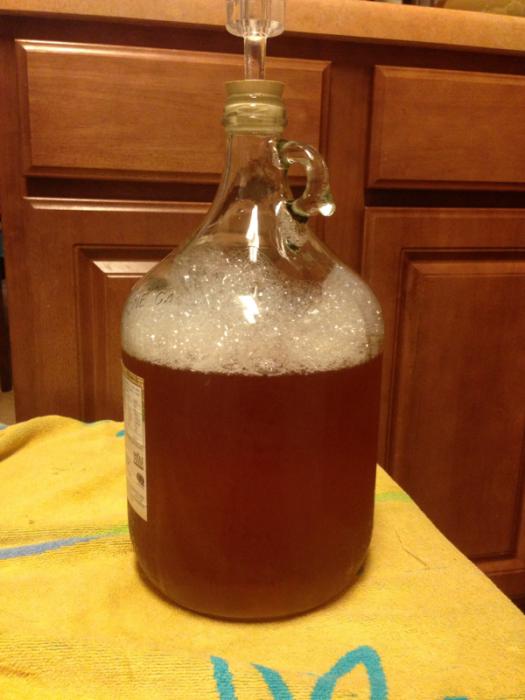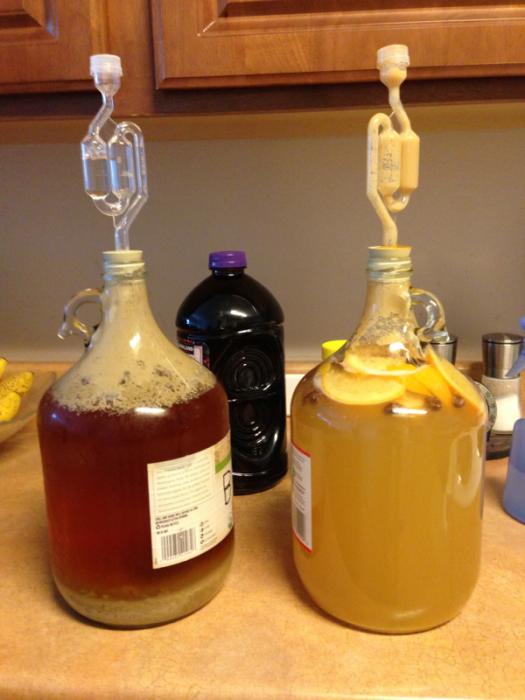Ivypunx
Well-Known Member
Thank you. I have grown to dislike the screw caps

It really is amazing how fast the nice people on here come back with exactly that piece of obscure information you need.

Thank you. I have grown to dislike the screw caps
Can you share any details of why you've grown to dislike them? As I said above, I'm only just about to do my first 1 gallon batch, and picked up a couple 1 gallon jugs with screw on caps, and now you've got me wondering if I might've made a mistake...











How long has it been in primary at this point? Have you taken gravity readings?Hey all!
I just started my first beer on Thursday, and already I think I've run into a problem. I'm using the 1 gallon small batch kit from Northern Brewer, and it came with their 1-gallon American Wheat kit. The kit is great, and very easy to use. The problem is that it's been extra hot here this week and what I thought felt like the coolest, darkest part of my apartment, the downstairs bathroom, actually turned out to be quite warm. The brew was boiled and pitched on Thursday night, and by Friday morning I had good bubbles going, and I went and got a "fermometer" from the LHBS just to keep an eye on it. Yikes, the fermentation was off the scale, and after I put an ordinary thermometer in the room to check the ambient temperature it topped out around 80 degrees. I've read enough and helped friends brew enough to know this is not good, and sure enough fermentation *appears* to have mostly stopped as of today.
I was initially going to let this brew sit in primary for two weeks as per John Palmer's advice, and bottle condition for two weeks, but now I'm wondering if I shouldn't go ahead and bottle after a week and let it condition for three weeks to mellow out a bit. Would it be better to let it stay in primary in the hopes that whatever yeasties are left will use the extra time to clean up a bit? The temp has gone down now to around 77, and I'll definitely be using the t-shirt wick method for the next batch I brew when the weather is this hot.
When you make rice wine, you usually just stick a tea towel or another cloth between the lid and the jar. That lets the co2 out, but makes it harder for bugs to get in. If everything was clean in the first place anyway.I haven't gone the airlock route, just left the lid slightly loose, and that seems sufficient to let CO2 out but keep bugs out. The poster of the earlier thread went with an airlock, but I'm fine without it. After fermentation settles I can just screw the lid on tight if I want to let things go a little longer, for instance for cold crashing.
It isn't universally true, but most pickles are made from vinegar after it's been fully processed. So there aren't any live bacteria in the process.I was worried at first that some of the pickling bacteria might stay behind in the lid, but that hasn't seemed to be an issue.
You could cut a balloon in half, then stretch it over the mouth of the jar and secure it with a rubber band. Then just poke a few holes with a pin to let the co2 out.I don't think the lids are going to last a really long time. I think they're going to rust at some point, and I'll need to figure out an alternative -- maybe sanitized foil, maybe big old rubber stoppers, maybe something cut out of silicone cutting boards, or just a piece of acrylic.
Welcome to your new addiction.Well it only took me a week or so to read through this entire thread. Just brewed my first batch of beer ever, an IPA from BBS. My wife and I are already planning to do an AG blue moon clone soon in addition to a few others. Tons of fun!
How long has it been in primary at this point? Have you taken gravity readings?
Generally speaking, 3 days is adequate for post fermentation cleanup. Though it's unlikely to hurt anything letting it sit in primary for two weeks. On the rare occasions I've had a yeast cake break down and start producing off flavors, it's usually around week 6 or 7 in primary. On the other hand, there isn't really any reason to let it sit in primary much more then 3 days past hitting your final gravity. You might as well free up the fermentor so you can start another batch if you want to.
I know I just spent a week or so reading through this whole thread, but I can't remember seeing a Cream Ale recipe. My wife is from Wisconsin and loves New Glarus's Spotted Cow (I'm a fan too) and I'd love to make her a beer similar to that. Anyone have a favorite Cream Ale recipe?
Cream of three crops is a very Popular one on this site and with my friends
JohnSand said:Small batches are easier to chill. I use ice-water in the sink.
Ya that's what I used but it still took longer than I wanted to.
Jsslack said:It helps tremendously if you stir both the wert and the ice water.


it's very easy to stick up to 4 of these in a cooler with some ice packs to maintain low 60s during the summer.
I don't see a real problem with that. I do small batches in reused juice bottles all the time. Just keep in mind the plastic is going to hold onto some flavors and aroma. So, you might want several.I've just brewed my second batch of beer .. the first batch was 1 gallon of an Amber Ale and was yummy. Yesterday I did a 2 gal batch of a tweaked recipe. So far I've been doing extract brewing, but I find the extract messy to work with. I've got enough extract for one more batch and I'm debating if my next batch will be all-grain and just use the extract for starters or not.
I used a 5 gallon food grade bucked for the 2 gallon batch and had a glass carboy for the one gallon batch. What do folks think about using water bottles for the 1 gallon batches?
That will help your cooling but you are stirring up the cold break (the material that makes your beer hazy & not clear in the bottle) - that's fine it's just you get a really nice cold break with an immersion chiller - I highly recommend them, I got mine for $30 or so bucks and its made for 3 gallon batches.